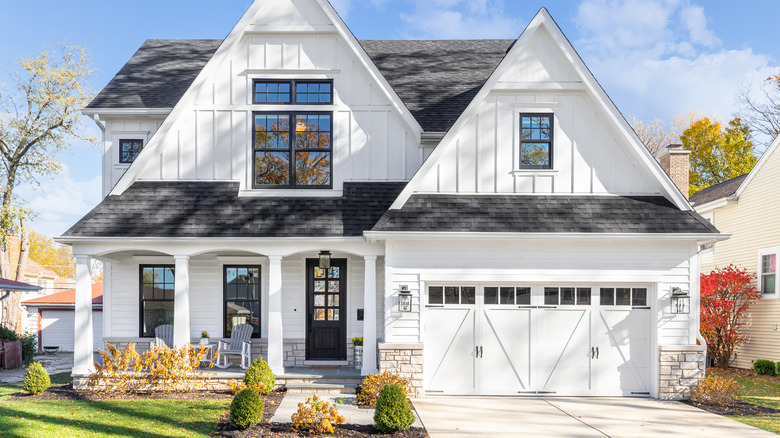New Zillow Report Shows A Promising Start To The 2023 Home Shopping Season
Last year was rough for potential and current homeowners. The impacts of inflation, limited availability of homes, and rising mortgage rates — 3.22% in January to a peak of 7.08% in December — successfully priced many out of exploring the housing market, decreasing the chances that many had of finding a home that they could afford. Thankfully, however, the new year ushered in some easing in this trend.
According to data from Freddie Mac, mortgage rates are beginning to ease as the impacts of inflation start to cool, which was the Federal Reserve's desired effect as they raised the cost of borrowing. New construction is also on the rise, giving buyers more opportunity and flexibility in their purchasing decisions than they had after the lull in new builds due to the pandemic. Thanks to these factors, a new report (via Zillow) predicts that buyers will get more bang for their buck this year than they did in 2022, a welcome shift from an expensive and harrowing market.
Buyers will be able to afford larger homes
As mortgage rates hit their peak in 2022, buyers were forced to look into smaller homes or entirely remove themselves from the market to find more sustainable monthly housing payments. Now, however, as rates begin to cool, people can afford more square footage that they previously would have had to sacrifice. According to Zillow, home size for the same monthly price has recovered by 84 feet in the past few months, and as the average cost of mortgage payments continues to dip, this trend could continue.
"Mortgage rates have a huge impact on the types of homes buyers are able to afford. Rates that doubled over the past year carved an extra bedroom or office space off of homes at the national level, though the sting has lessened in recent weeks," said Anushna Prakash, economic data analyst at Zillow. "Buyers in more affordable hot markets are still getting solid bang for their buck, despite losing a lot of purchasing power."
Where are these impacts being felt the most?
Despite changes in an overall national trend, the impacts of decreasing mortgage rates aren't felt in the same way across the country. Factors in each area — availability of homes, lower cost of living, increasing population size — all impact the actual cost of homes alongside larger, universal factors. In fact, according to the Zillow report, hot markets in Hartford, Indianapolis, and Cleveland saw significant losses in the amount of square footage buyers could get for $3,000 a month last year, decreasing upwards of 1,000 square feet.
After the recent rebound, however, a few cities across the United States are seeing more significant positive impacts in buying power than the national average of an additional 84 square feet. Salt Lake City tops the list with 365 square feet, while Minneapolis, Memphis, and Denver trail closely behind. If mortgage rates continue on the same trend throughout the year, we'll likely continue seeing more of these positive changes nationally.


